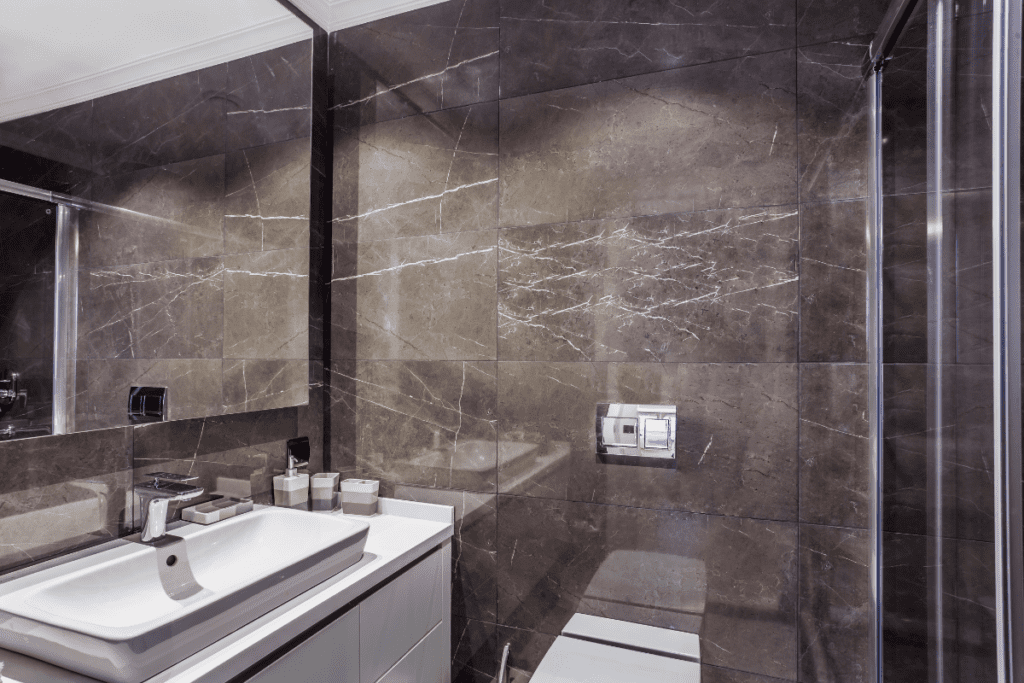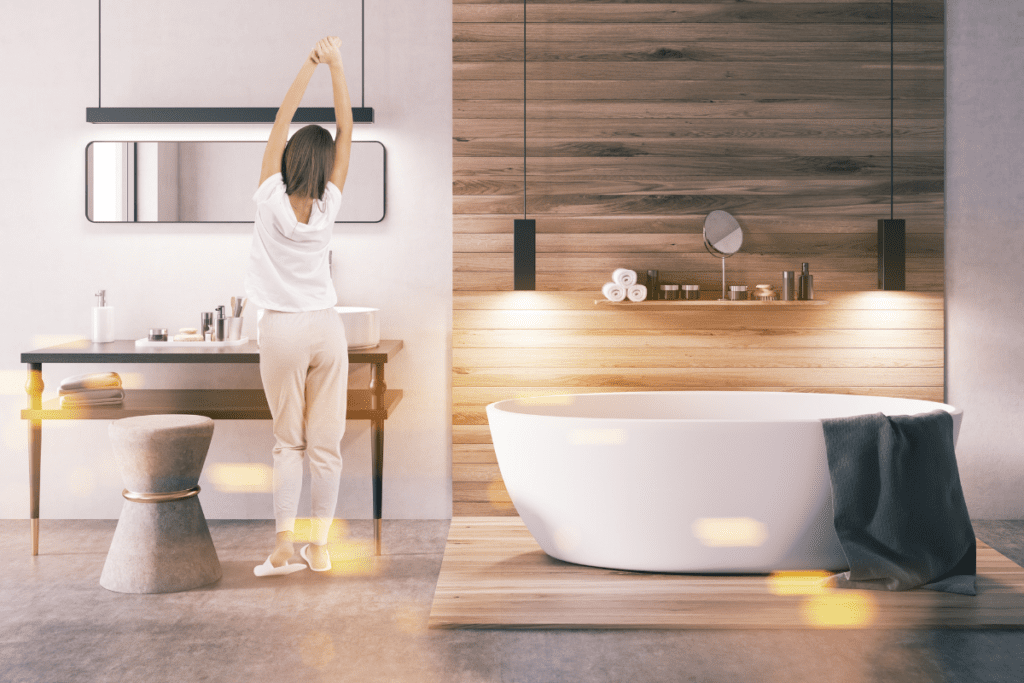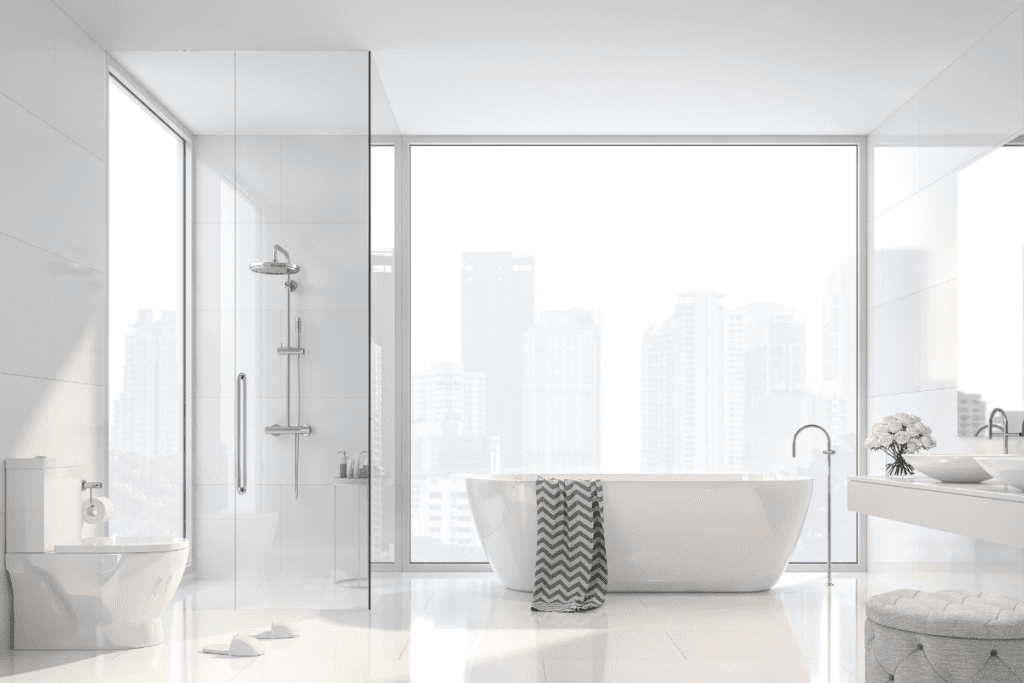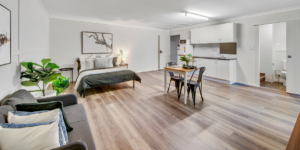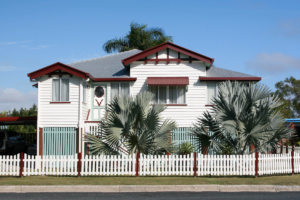If you’re looking for a fast and effective way to increase the value of your property, then doing a renovation on your bathroom is one of the two areas of your house (the kitchen is the other) that will give you the best bang for your buck.
I’ve been a plumber for nearly 30 years, starting as a kid with my dad and brother, so it’s safe to say I’ve got a lot of experience and seen tons of mistakes. I’ve very often had to fix disasters created by people who didn’t know what they were doing.
Even if it’s only a small bathroom renovation you are doing, it can seem a bit overwhelming with such a lot of elements to consider, working out the best order to do things and who you need to call on at each stage. There is a lot of thought to go into it.
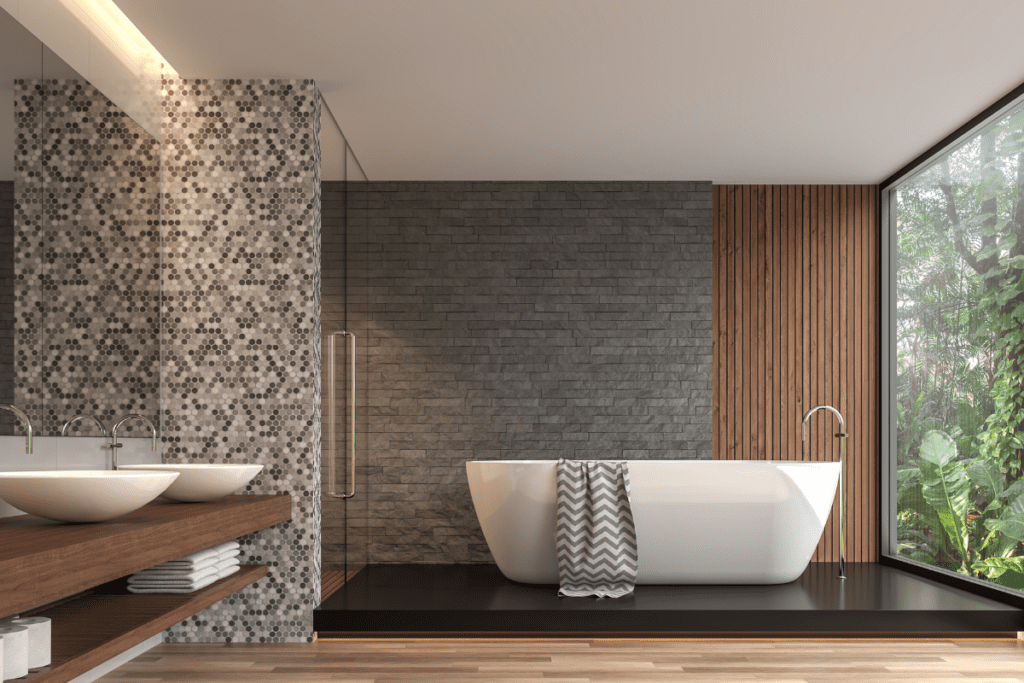
Where do I begin?
Even before you start buying up all the glossy mags for inspiration, the very first thing you need to do is work out how much your budget will allow you to spend, so you keep yourself in check.
The general rule for a bathroom reno is around 2% of the property’s total value. Sticking to this will mean you won’t make the big mistake of overcapitalising.
Always allow extra for unexpected costs. Some things to consider are structural changes, changing the scope of works, and rubbish removal. We’ve made a little guide about this for you too, which you can download here.
The latest 2019/20 HIA Kitchen and Bathroom report found that the average value of bathrooms installed as part of a renovation was $19,085 and interestingly varied between states and age groups.
That amount may be out of your reach, but with smart choices, you can still manage to create the wow factor, even with a low budget makeover.
Some ideas for spending up to $5000
- Re-paint the walls in a light and modern neutral colour (download my reno colour palette here)
- Replace the handles on the vanity and paint it if you can
- Get new lighting
- Change the mirror
- Replace the tapware
- Update the shower screen and showerhead
- Get the tiles cleaned and re-grouted
- Have the bath re-surfaced
- Replace the toilet seat and toilet roll holder
Add these ideas for spending up to $10,000
- Replace your vanity, mirror, and taps
- Get a new shower and bath
- Create a feature with some tiles or install one with a panel wall
- Add new lighting
- Change or add a window or a skylight

STEP 1: Determine your style
Determining your style preference (which can be anything from something contemporary or classic, retro, day spa, or even a luxurious hotel-inspired look), will give you a clear picture in your mind of the right fittings and fixtures to look out for.
Think about what will work in with the house’s style – you probably wouldn’t put a super modern looking bathroom in a home that’s an older style, unless you’re planning to renovate the whole lot at some stage.
And you’ll need to keep in mind your reasons for renovating. Is it going to be your dream bathroom? Is it for tenants? Or perhaps you are getting ready for the market? Each of these scenarios will mean a difference in your choice of budget, quality, and style, producing quite a different result.
STEP 2: Measure and plan your space
Before installing anything new, you’ll need to carefully measure the whole room, including windows, doors, and walls.
Then you can use one of the great online tools available to help you plan out your room like:
STEP 3: Your shopping list
Your ‘must-haves’ include towel rails, toilet roll holders, taps, showerheads, spouts, and drain covers after your prime cost items.
It’s also good to consider the small accessories like toilet brushes, toothbrush holders, and soap holders at the design stage so you can allow for their practical storage.
Remember to include your mirrors, light fittings, and other electricals too. Beautiful lighting that is both ambient and effective will have a significant impact on the completed project. The fixtures for your bathroom are the defining features that complement the style.
STEP 4: Build your team
This is really important. Creating your personal team of professionals in any venture or project helps set you up for a successful outcome.
Ask your friends, family, colleagues, and even other tradies you’ve dealt with before, for recommendations. Word of mouth is still the best way to get someone who will do an excellent job for you.
If you have to choose them, make sure that you check first online to make sure they’re licensed and check for any reviews.
Unless you can do any of the jobs yourself, you’ll most likely need all the following tradies:
- Plumber: Plumbing systems are complicated and need someone with expert knowledge. You’ll need a plumber to move or add plumbing and put in toilets, baths, and showers.
- Builder: If you want the most stress-free experience, then getting a builder who understands your vision and is a good communicator is necessary.
- Sparkie (electrician): –You’ll need them if you are installing any new lighting, heating, exhaust fans, heated towel rails, powerpoints, and switches. They need to be licensed to meet the building regulations.
- Waterproofer: If your tiler isn’t licensed to install waterproofing. They’ll make sure that the bathroom meets all regulations before the tiling commences.
- Tiler: They will be needed for wall and floor tiling, and if they are doing the waterproofing, they need to be licensed.
- Painter: to do the walls, ceilings, and doors
- Carpenter: for cabinets or shelves.
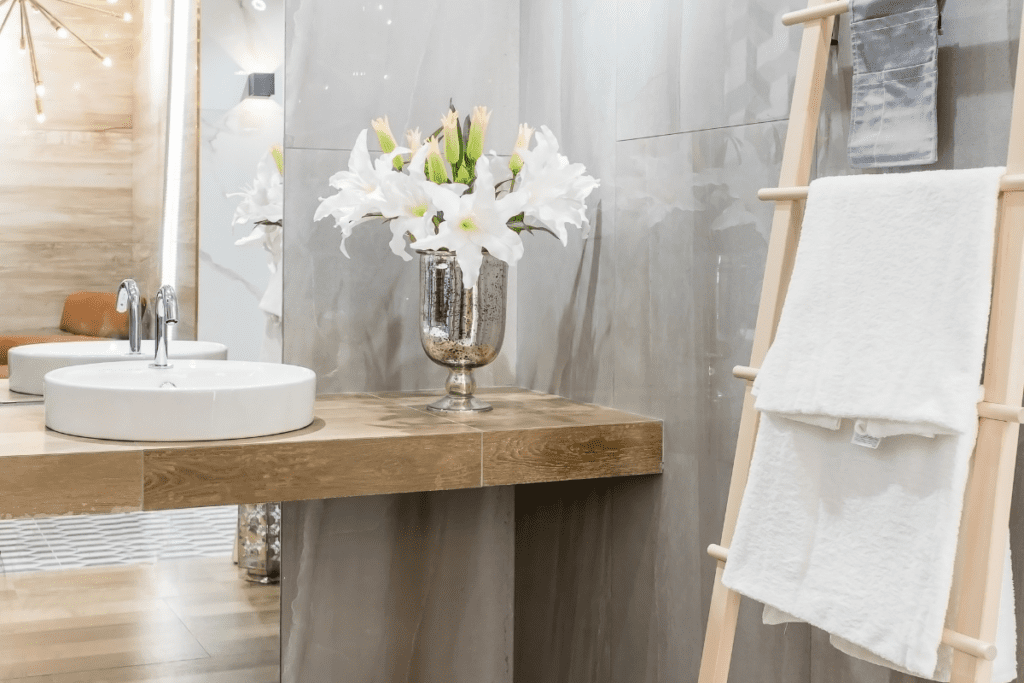
STEP 5: Choosing your fixtures and fittings
TAPS AND SPOUTS
When you’re choosing your taps and spouts for the bath, shower, or vanity, you will need to consider the following along with your ‘WELS’ Rating:
Placement and Compatibility: There can be issues when it comes to installation if you haven’t first thought about your taps’ position. They may need space behind them, or you may want them to be off to the side or in the middle.
Because taps are sold separately from your fixtures, you also need to check that they are compatible. There are generic taps that will fit generic fixtures, but some will only fit one type.
Functionality: Do you want something tall above your basin, or do you need it to be wall mounted? Should you have a long spout that extends over your bath? Are they going to stick out too far in your shower?
Taps or Mixer: The main difference between taps and mixers is that taps come as a three-piece set with a spout and have a more traditional look, and mixers are all-in-one with a more modern look.
Because mixers give you hot and cold water from the one spout, you can control the temperature and water flow more easily.
Mixers are an excellent choice if there are children or elderly in the house because they’re easier to turn on and off rather than having to turn the crosshead.
There is such a vast range to choose from, but with all your choices, as long as you keep the style, quality, and function in front of mind, you will make the right selections.
VANITY
Ok – so there are a few boxes the vanity has to tick. Of course, It needs to look good, but it also needs to be functional and useful, it needs to fit correctly and be in harmony with the rest of your bathroom.
You will need to talk to your sparky about where your electrical outlets can legally go, which may determine where it’s ultimately placed.
Talk to your plumber about what style of vanity will work for your bathroom, as some of them have pipes that need to go into the wall rather than the floor.
When you measure up your bathroom, allow at least a 700mm space in front of the vanity between other fittings, and leave an area of 200mm between a vanity and a toilet.
It would help if you chose your vanity before your basin, and because they are usually an additional cost, you will need to budget that in.
The cheaper option you can go for is one with an integrated basin.
BASIN
Being spoilt for choice, you can go to town with the basin’s style if you are looking to make a statement, especially with the ‘above-the-counter’ or freestanding ones.
If you don’t have much space, you can opt for a wall-hung basin, an under-counter basin, or a semi-recessed basin which overhangs the countertop.
Most basins are made from ceramic or concrete, but there is a range of stone and earthy materials.
SHOWER
This is where you will do lots of research. Get this one wrong, and you could be starting every morning on the wrong foot.
There is an excellent range of heads available that give you the amount of water you need and are highly efficient, saving litres and litres of water to keep your bills down – so it’s worth investing in a good quality one.
You can choose your shower from:
- Fixed showers: have a fixed arm with a pivoting head either from the wall or ceiling.
- Adjustable showers: These have movable arms so you can direct the spray.
- Hand showers: These give added functionality to a fixed wall shower with the ability to remove the handpiece.
- Rain showers: Large-headed rain showers are luxurious but may not be great for the whole family or for those who don’t like getting shower spray on their hair every time.
- Showers on rails: Convenient, adjustable height rail for ultimate control.
- Shower systems: These have both an overhead shower and a hand-held shower -so you get the best of both worlds.

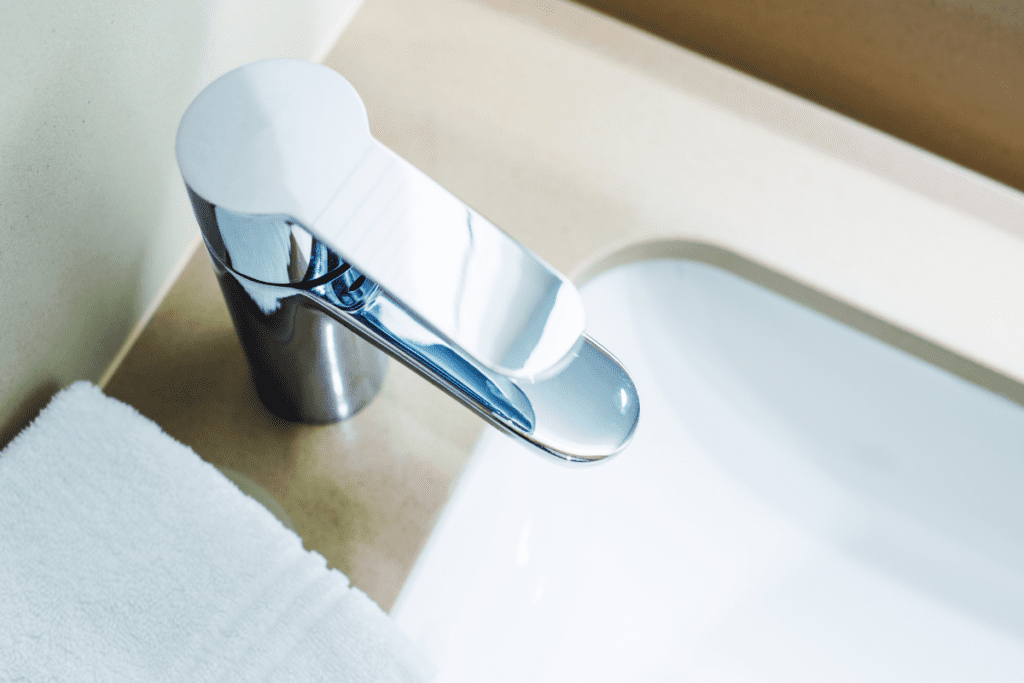
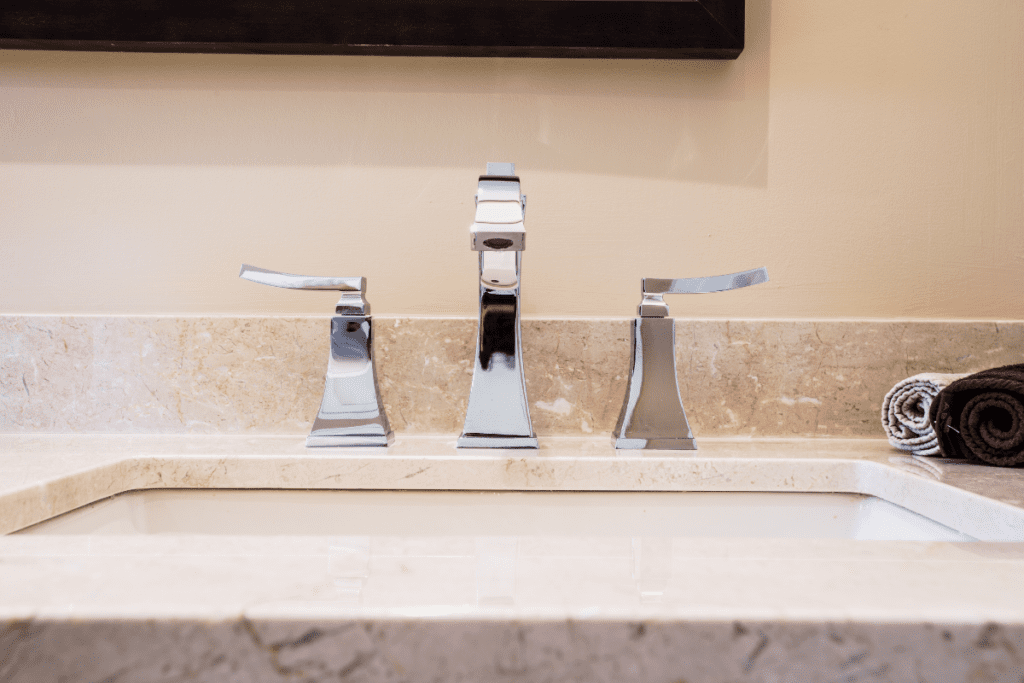


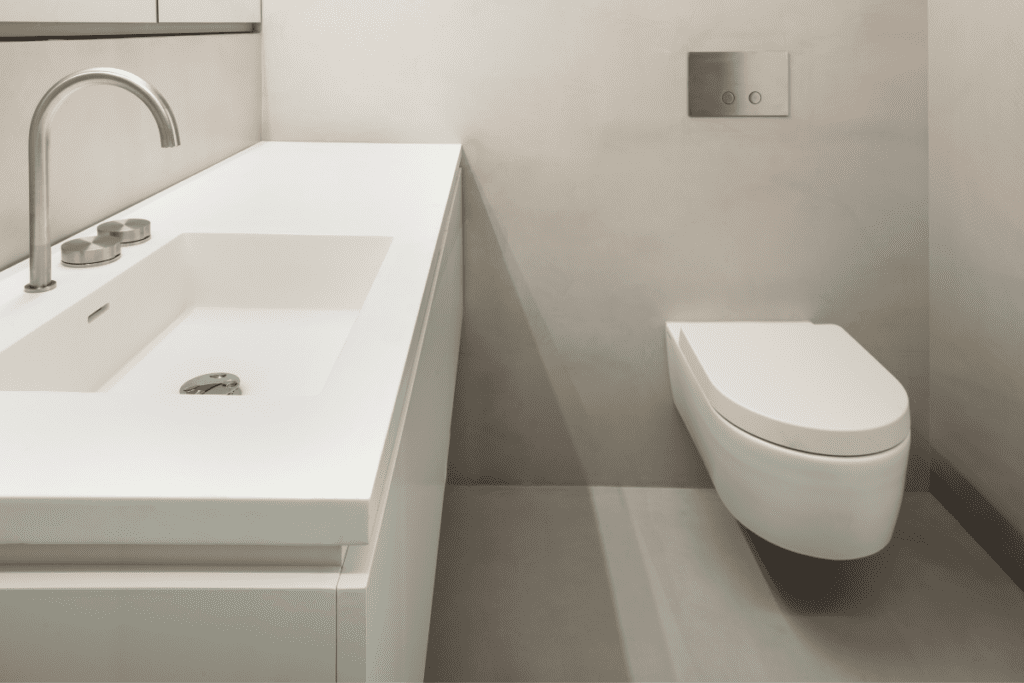



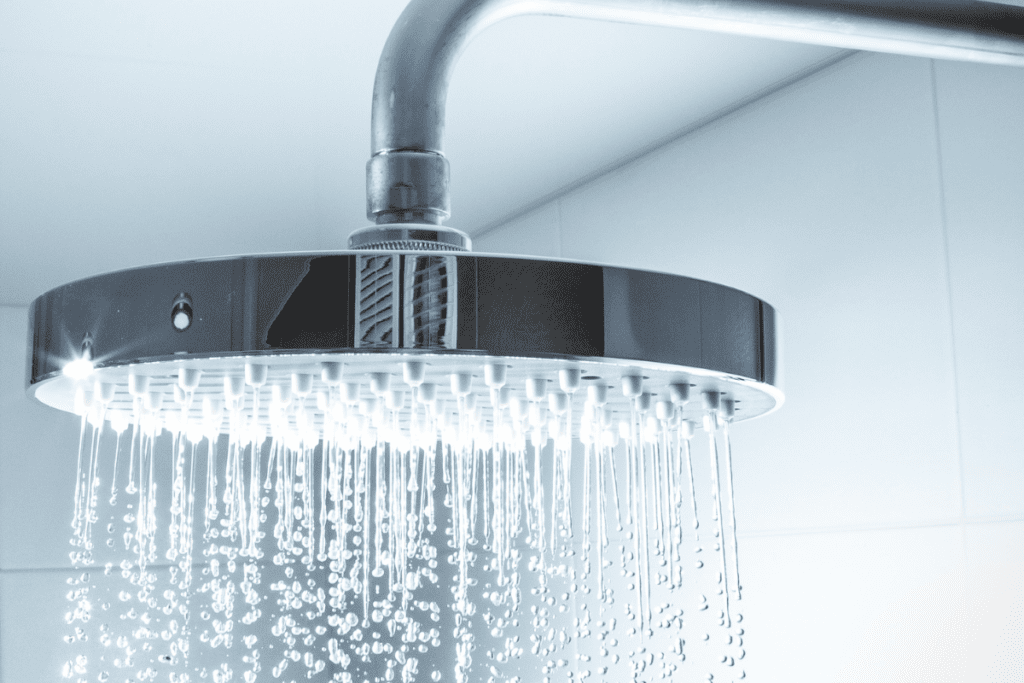
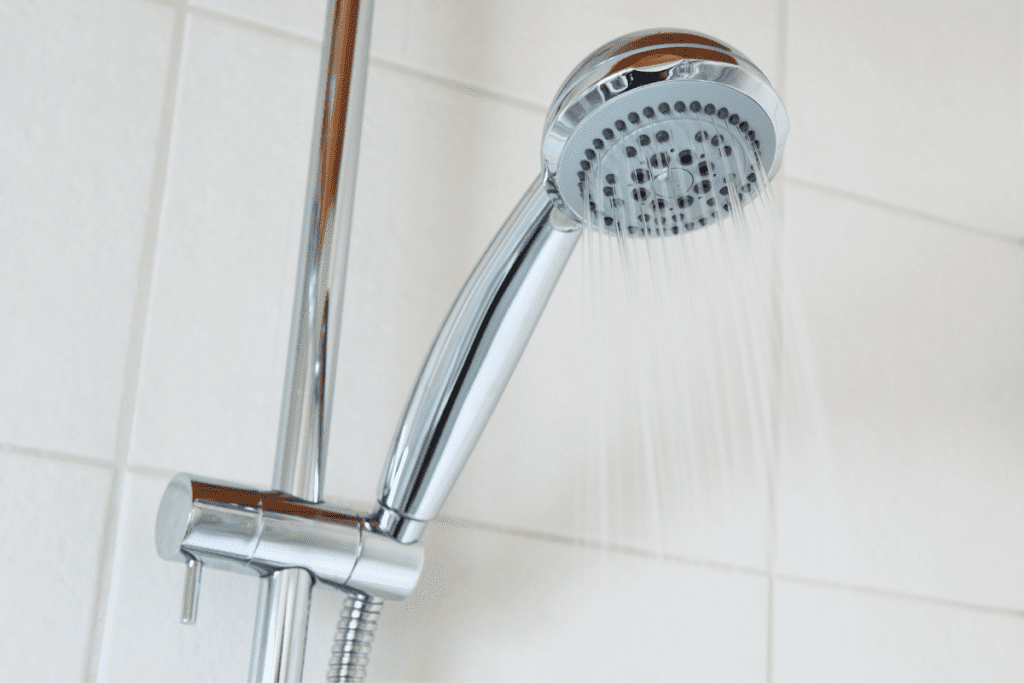
STEP 5: Choosing your fixtures and fittings cont.
BATH
Because of its size, your choice of a bath will most likely have the most significant impact on your bathroom, even a small bath strategically placed can enhance the room’s appeal.
There are many sorts of baths available and can range in price from a few hundred to many thousands of dollars.
Budget level baths start at $300 and can be as much as $1000, and are usually made of acrylic or fibreglass. Fibreglass baths are unfortunately susceptible to stains and mould, so they are not a good option for longevity. Acrylic and enamel baths are more durable and scratch-resistant.
A mid-range bath can cost around $1000 – $3000 and usually be enameled cast iron, steel, or polymer.
If you go for the ‘Luxe’ model, you could be parting with anywhere around $3000 – $8000. High-end bathtubs are fabricated from a high-quality material like stone.
The main types of baths you can choose from are:
- Clawfoot and pedestal baths: The original clawfoot baths were made from cast iron, with a porcelain lining, which is why they are so heavy. Modern reproductions use more lightweight materials.
- Recessed or alcove baths: These are the most common baths that you see in homes and often have showers over them. They’re usually Acrylic or Fibreglass.
- Drop-in baths: Drop-in baths are designed to drop into a cavity in the floor or have a raised platform for a flush finish. They can be a little challenging to get out of so worth keeping that in mind for those who aren’t so agile.
- Another type of drop-in bath is the ‘overflow tub’, which is a bit like an infinity pool. The water overflows into a gutter and circulates back into the tub. Because of the striking visual effect – you could go for this type if you’re looking for the wow factor!
- Freestanding baths: Just as their name suggests, these baths are not connected to any walls, which allows them to come in a wide variety of designs and materials so you can go for something exciting.
- Corner baths: A corner bath is a great option when you’re limited on space. They are triangle-shaped so that they can fit neatly into a corner.
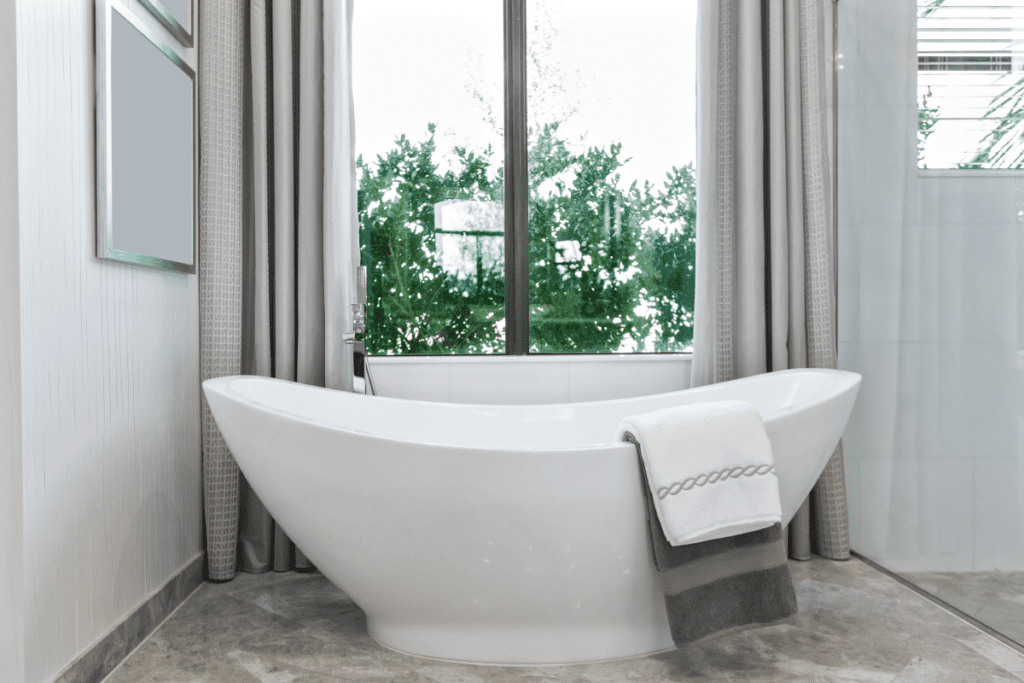

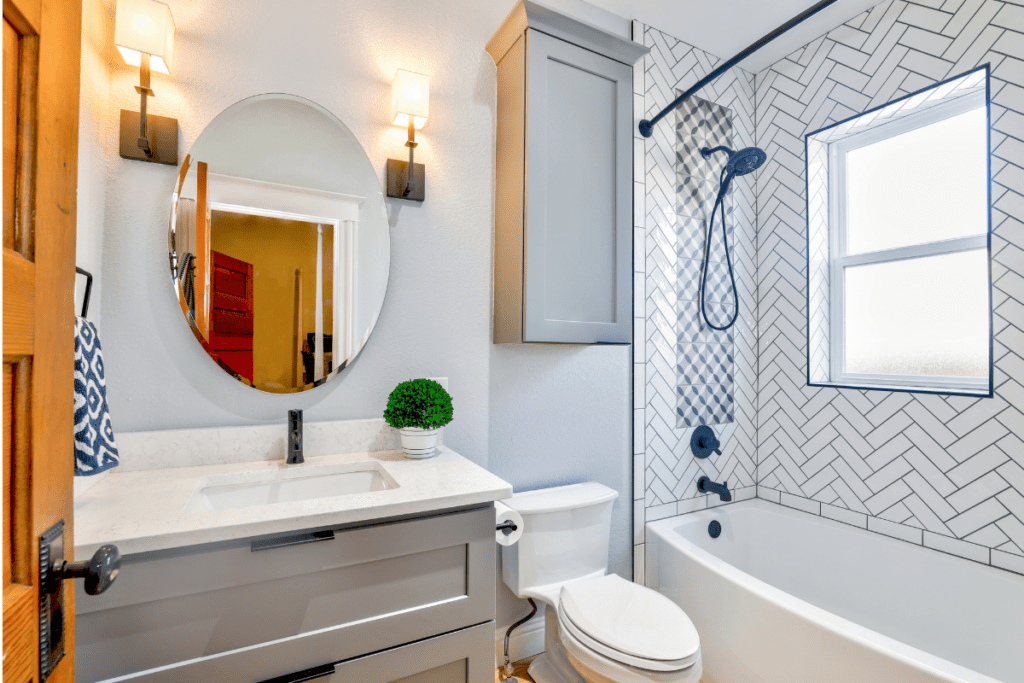


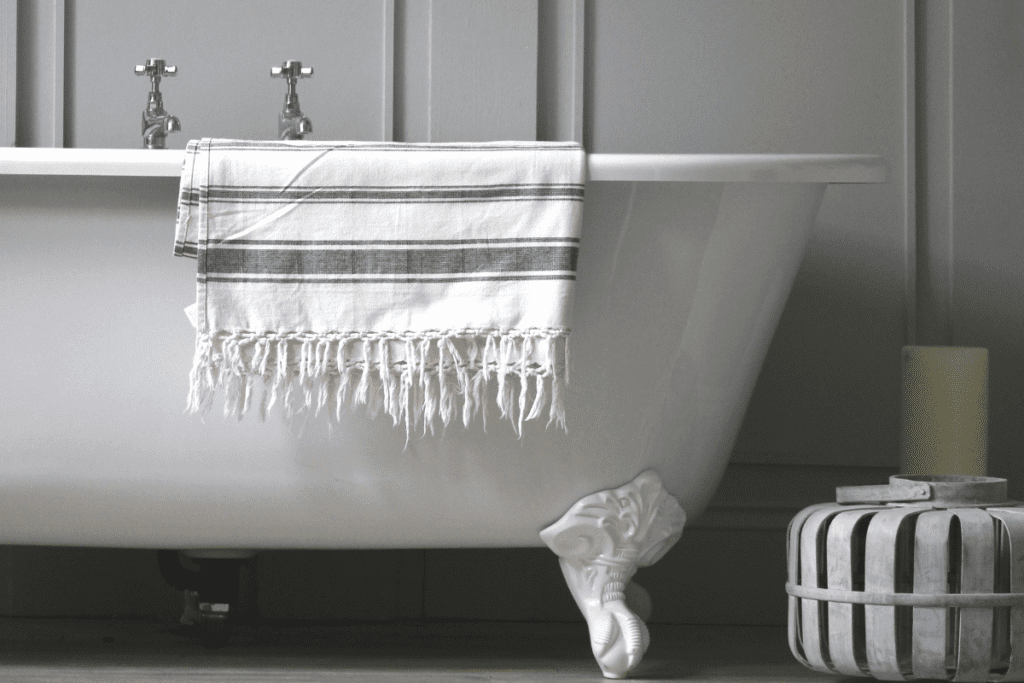
TOILET
Staying practical, just like all your other items, you will need to ensure the toilet complies with Australian Standards and has the Water Efficiency Labelling Standards (WELS). These standards require flushes to use a maximum of 5.5 litres.
One thing you may want to look at when buying your toilet is the diameter of the opening to see if it’s larger than the traditional toilets.
The traditional toilets with a relatively small opening size and a narrow bottom usually use around 12 to 18 litres of water per flush.
Modern toilets have a more powerful flush and use only 4.5 to 4.8 litres of water per flush, using more than 50% less water than the older styles.
The other choice you will have is between gravity-fed or pressure-assisted toilets.
Gravity-fed toilets are cheaper than pressure-assisted ones and often used in commercial buildings. When you flush a gravity-fed toilet, the waste is pushed down by water going down the tank into the bowl.
Pressure-assisted toilets can handle larger amounts of waste and are more powerful. Because they use air pressure, pressure-assisted toilets save more water, but they can be noisier and more expensive because they are more powerful.
Both the gravity-fed and pressure-assisted models can be dual-flush. Even though dual-flush toilets may be more expensive than single flush toilets, they better save on water consumption and your bills.
As far as styles go you can choose from:
- Close-coupled toilets: This type of toilet suits all bathrooms because it has a very traditional look. The pan and cistern are joined together so you can’t see the flush pipe.
- Connector toilet: This one is the most traditional toilet bowl with the cistern joined to the pan by a plastic flush pipe and connector plate. It has the most significant amount of flexibility for installation, which can help keep your costs down.
- Invisi concealed toilets: With these toilets, the cistern is hidden inside the wall cavity, ceiling, or under the counter – so you only see the toilet pan. This style of toilet is very modern in design. It doesn’t take up very much space, which is perfect if you are working with a smaller bathroom but will often require significant plumbing modifications that can be expensive.
- Wall faced close-coupled toilet suites: The toilets have the back of the pan sitting flush against the wall, meaning there are no gaps between the toilet and the wall, making them easier to clean. This is a solid unit and creates a bold and modern look in your bathroom.
Before choosing your toilet, you will need to talk with your plumber about which pan option to select that will suit your plumbing. There are usually four trap versions of each pan model (S-trap, P-trap, Skew trap, or Universal trap.)
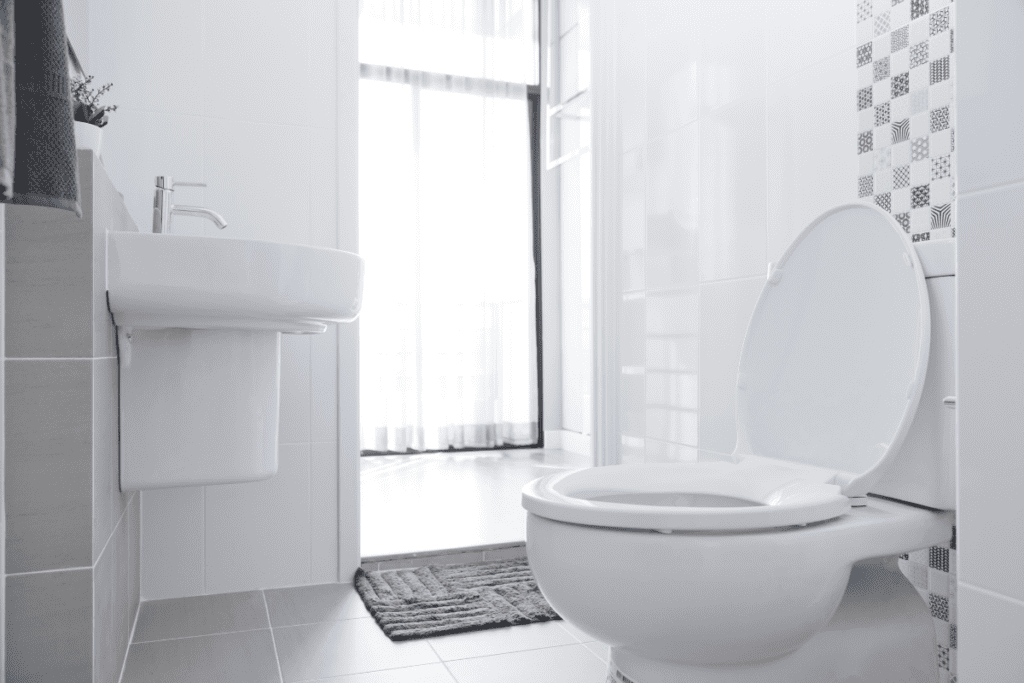
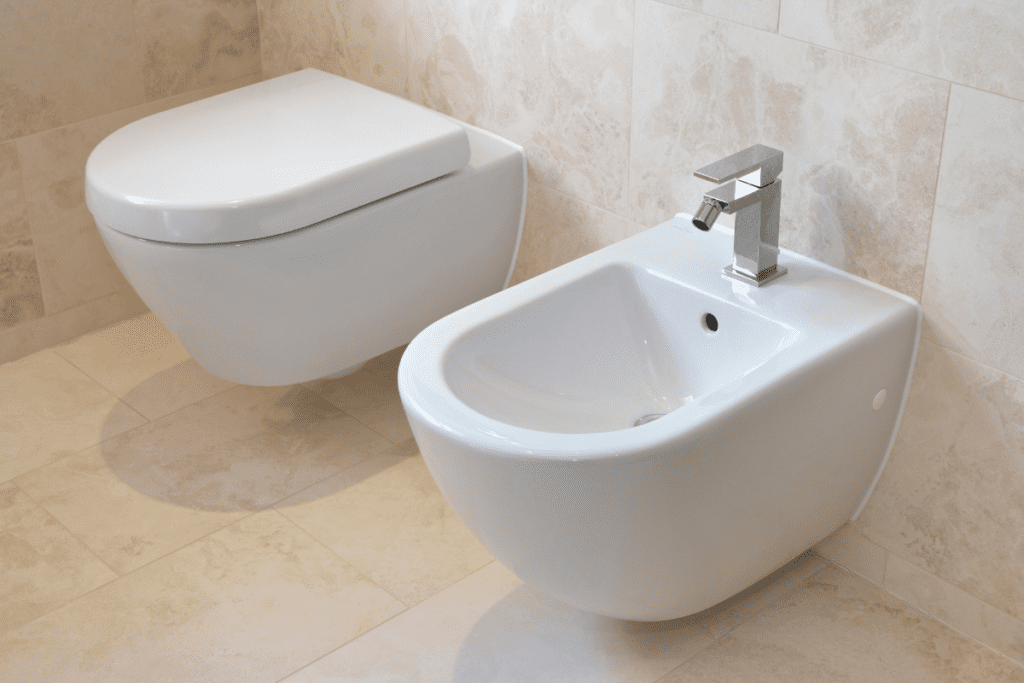
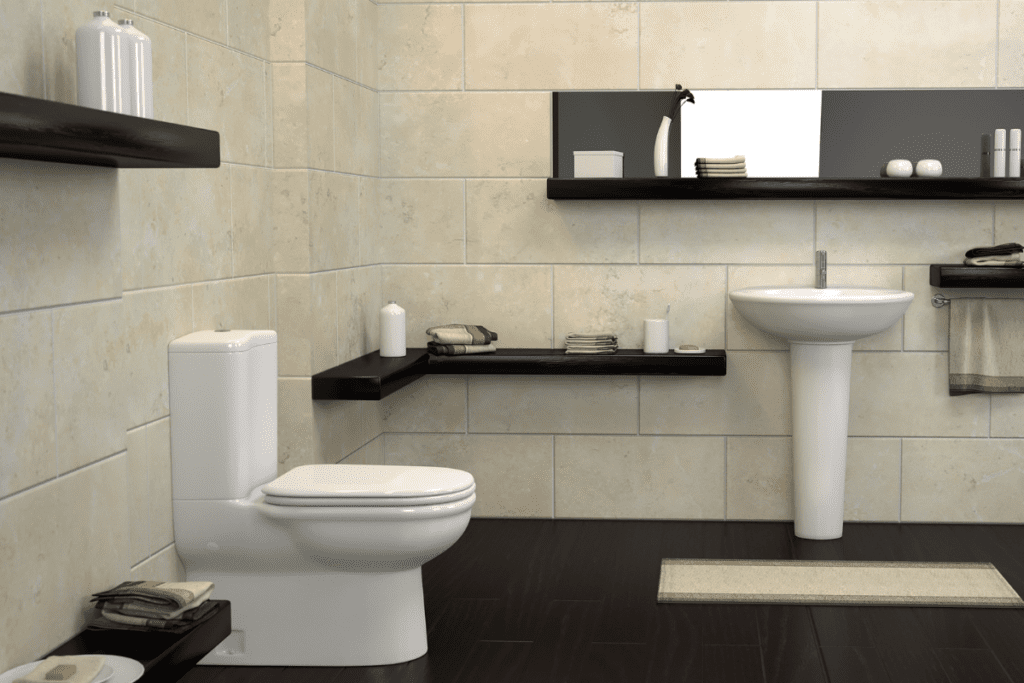

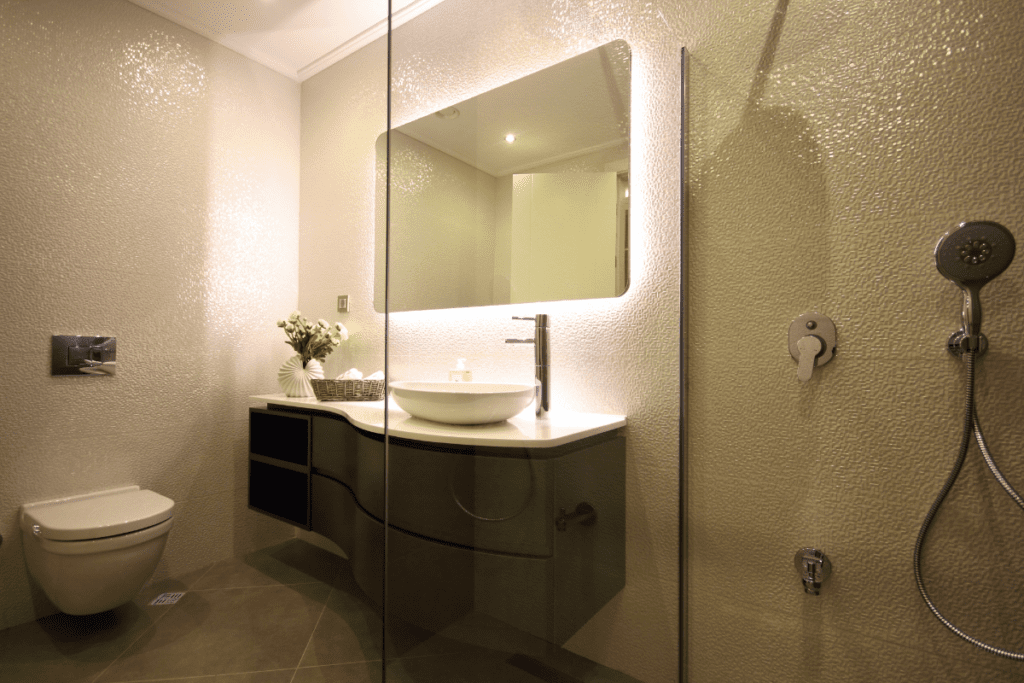
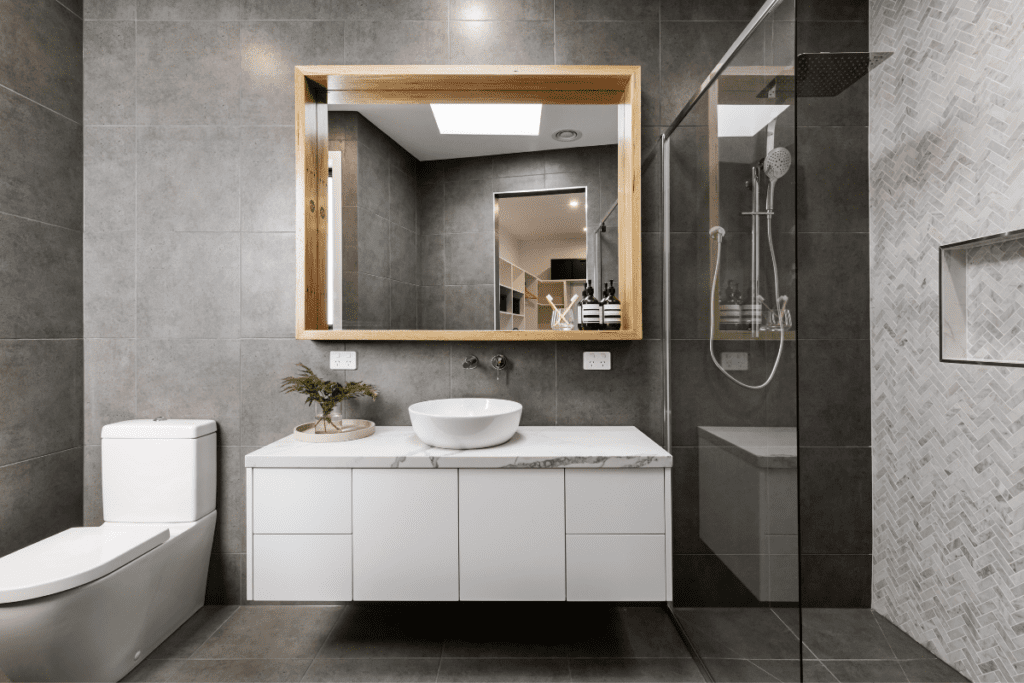
If your builder isn’t project managing for you, you will need to be well organised, have your trade team primed, and communicate with each one of them clearly, all the way through.
YOUR RENO TIMELINE CHECKLIST:
- First, get your plumber and electricianto isolate or disconnect (if you aren't living there) the water, electricity, and gas.
- Your builder or handyman will strip-out any fixtures and fittings, tiles and materials to be removed. This can take up to two or three days if you are doing a full renovation. They may even remove the walls and the ceiling.
- Your builder or carpenter will check the floor's integrity at this stage to make sure there is no damage and that it has a good foundation, especially if you are planning to instal heavy P.C items like a cast iron bathtub.
- Your plumber will come and 'rough-in' the pipes and drainage which can take less than a day if you're not moving your bath, shower or vanity.
- The electrician will' rough-in' the wiring and may be able to work in at the same time as your plumber.
- If you're replacing the walls, your builder or carpenter now instal them using water-resistant Villaboard.
- Next, the tiler comes in to prepare the floor and walls, which could take a couple of days.
- Waterproofing will be done to all the wet areas – walls and floors. You may have to wait up to five days to allow the waterproofing membrane to cure. This is not a D.I.Y job - if it's not done correctly you might end up having to pull everything out and start again. Your waterproofer will provide you with a waterproofing certificate before you commence tiling. In an apartment, your body corporate may want to inspect the certificate and site at this stage of construction.
- Tiling, grouting, and painting next. If you are installing floor-to-ceiling tiles for a modern look, they will paint the ceiling first. This part can take up to a week.
- The toilet, bath, vanity, sink, and any cabinets can now be installed.
- Then, your plumber will do the fit off and install the toilet, bath, shower, taps, and vanity. This can take from one to three days.
- Your sparkie will do your fit-out of lights, power points, and switches. This may be up to three days.
- The soap dish, towel rails, toilet roll holder, mirror, door, and window architraves can now be installed by your carpenter.
- Now, all that's left is a final clean and inspection so you can stand back and enjoy.
WANT MORE INSPIRATION? Check out our bathroom design gallery below.



